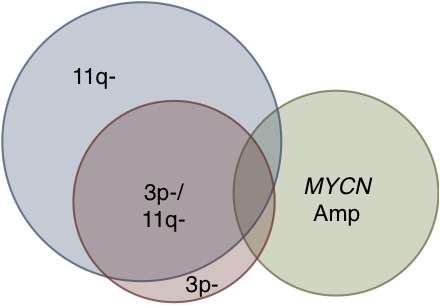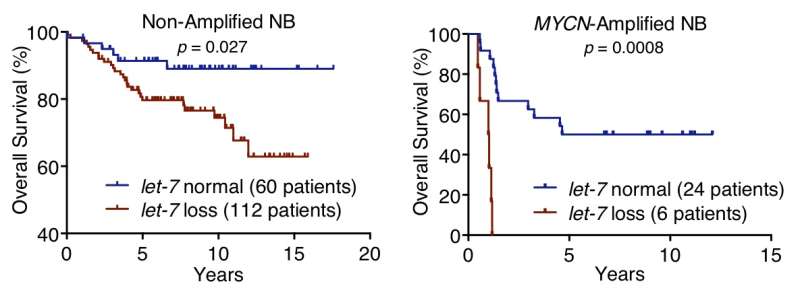Loss of a microRNA family, let-7, found key in neuroblastoma

Great strides have been made in treating neuroblastoma, the most common cancer in infants and toddlers. However, advanced cases are often fatal, and children who survive often face life-long physical and intellectual challenges related to their treatment. A study led by researchers at Dana-Farber/Boston Children's Cancer and Blood Disorders Center, finds that a microRNA called let-7 plays a central role in curbing neuroblastoma and could focus efforts to find a targeted, nontoxic alternative to chemotherapy.
Published by Nature (Advance Online) on July 6, the study unifies several theories about neuroblastoma and also has implications for other solid tumors in which let-7 is lost, such as Wilms tumor, lung, breast, ovarian and cervical cancers, says first author John Powers, PhD, of the Division of Pediatric Hematology/Oncology at Boston Children's Hospital.
The let-7 family of microRNAs (bits of genetic code that regulate genes) is known to be involved in both stem-cell differentiation and tumor suppression. Recent research had implicated LIN28B, a protein that inhibits let-7 maturation, in neuroblastoma. But the new study, through work on neuroblastoma cells and analysis of patient data, found that LIN28B is only one of several cancer mechanisms that involve let-7 suppression.
"We're showing that let-7 inhibition is central to the development of this disease," Powers says. "So critical in fact that neuroblastoma uses at least three distinct ways of eliminating it."
Powers and colleagues first demonstrated that genetic amplification of the oncogene MYCN—producing many thousands of copies of its mRNA—allows neuroblastomas to sequester let-7, taking it out of circulation.
"Children with a MYCN-amplification event, which occurs in about 25 percent of cases, have the poorest prognosis," says Powers, a senior scientist in the laboratory of George Q. Daley, MD, PhD, director of the Stem Cell Transplantation Program at Dana-Farber/Boston Children's. "A big question in neuroblastoma research has been, 'why do you need so much MYCN mRNA?' We found that MYCN is expressed at such high levels that it is able to sponge up otherwise functional let-7."
Second, the researchers showed that chromosome deletions associated with neuroblastoma (in the 11q and 3p regions) are home to multiple let-7 family members and that genetic loss of let-7 also tracks with poor outcomes.

"Genetic loss of let-7 was not widely appreciated in neuroblastoma," says Powers. "People knew about chromosomal losses and were looking for a tumor suppressor, but they were mainly looking at the protein-coding genes, not microRNAs."
Interestingly, data from 202 patients with neuroblastoma showed that chromosomal loss of let-7 rarely occurred in patients with MYCN amplification. The two cancer-promoting events, both suppressing let-7, were nearly mutually exclusive, meaning most neuroblastomas involved either one or the other.
"From the cancer's point of view, you have to deal with let-7," says Powers. "If MYCN is not amplified, the tumor instead just loses it genetically. In either case, let-7 is mitigated."
Likewise, if let-7 is eliminated through chromosomal loss, MYCN amplification becomes unnecessary for the cancer to spread. "Once a tumor has disrupted let-7 genetically, it doesn't need to amplify MYCN because it doesn't need to sponge let-7," says Powers.
Powers believes that strategies focused on restoring let-7 could provide a fresh, low-toxicity approach to neuroblastoma and other cancers in which let-7 is lost. Let-7 itself could potentially be a drug, if the challenges of delivery (common to all RNA therapeutics) can be overcome.
The team's findings, if replicated in a larger number of patient samples, could also help establish genetic typing of neuroblastomas, predicting disease severity based on LIN28B levels, genetic loss of let-7 and MYCN amplification and perhaps guiding a precision medicine approach.
Powers also hopes to apply the findings to create better mouse models of neuroblastoma. The current models do not account for let-7, he says.
More information: John T. Powers et al. Multiple mechanisms disrupt the let-7 microRNA family in neuroblastoma, Nature (2016). DOI: 10.1038/nature18632
















